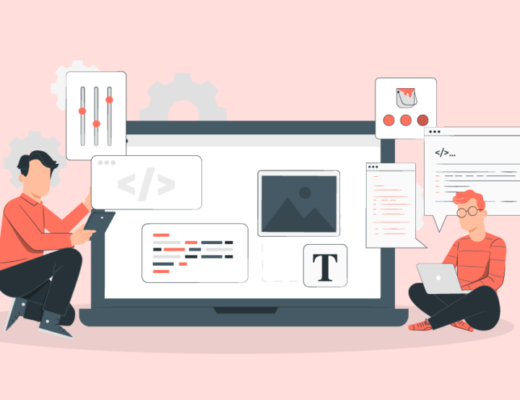Are you thinking about creating a website in 2023? That’s great news! Nowadays, having a website for your business or personal brand is essential. It’s a place for people to learn about who you are and what you have to offer.
But, before you dive in headfirst, it’s important to be aware of some common mistakes when creating a website. These mistakes can hurt your website’s functionality, user experience, and ultimately, your online success.
In this blog, we’ll be sharing “10 mistakes to avoid when creating a website in 2023”. So, grab a cup of coffee, get comfy, and let’s dive in!
List Of Common Mistakes In Web Design 2023
- Poor Navigation
First up, poor navigation. Nothing’s more frustrating than trying to navigate a website with confusing menus, broken links, and hidden pages.
If visitors can’t figure out how to get around your site, they will be going to bounce faster than a rubber ball.
So, when you’re designing your website, it’s important to make sure that your navigation is user-friendly and easy to use.
For that, try organizing your content into clear categories. You can use descriptive labels for your menu items, and add a search bar to help users find specific content.
And, don’t forget to make important pages like your contact info or product pages easily accessible from your homepage or main menu.
- Slow Load Times
Secondly, slow load times. Ain’t nobody got time to sit around waiting for a website to load.
If your site takes too long to load, visitors are going to move on to something else. This can happen if your site has large images and videos, too many plugins or widgets, or isn’t optimized for mobile devices.
To speed things up, try optimizing your website’s content. You can do this by reducing the size of your images, compressing videos, and minimizing the use of unnecessary plugins or widgets.
You can also use a Content Delivery Network (CDN) to distribute your content across multiple servers and improve load times.
And finally, consider using a caching plugin or tool to store commonly used elements of your website in a user’s browser cache and reduce load times on subsequent visits.
- Outdated Content
Nobody likes seeing old blog posts, outdated product info, or details about events that already took place. It makes your website look neglected and can give off a bad impression.
Not only that, but search engines prefer websites with fresh, relevant content. So, if you’re having outdated content, then it can hurt your search engine rankings.
To avoid this mistake in web design, make sure to regularly review and update your website’s content. A content calendar can help you stay organized and plan out updates in advance.
- Broken Links
Next, we have broken links. Nothing is more frustrating than clicking on a link and getting a 404 error page. Broken links can happen for various reasons, such as changes in website structure or moving content to new pages.
To avoid these web issues, it’s important to regularly review your website. Also, you can use tools like Google Search Console to scan for broken links and monitor the situation.
- Poor Mobile Responsiveness
One of the main mistakes in web design is poor mobile responsiveness.
Nowadays, more than half of all internet traffic comes from mobile devices. So, having a website that isn’t optimized for mobile users is a big no-no.
This can lead to text that’s too small to read, images that don’t resize properly, or menus that are hard to navigate on a smaller screen.
Most modern website builders have responsive designs that automatically optimize your website for mobile. So, make sure you take advantage of this feature.
- Website Security
Next, website security is super important! It’s not just a technical thing, it’s related to design too. Designers need to think about user journeys and how they can keep sensitive data safe, like putting business-critical data behind authentication and payment walls.
Some common mistakes in web design to avoid include not using HTTPS, weak password requirements, no user authentication, and no backup and recovery strategies.
- Non-Responsive Web Design
Another mistake when building a website to avoid is non-responsive web design. Your website needs to look great and be easy to use on all devices. So, make sure it’s responsive and consistent across browsers and devices.
Non-responsive design can lead to higher maintenance costs, a poor user experience, and reduced traffic.
- Design Thinking Approach
Next up, let’s talk about using a design thinking approach. Designers need to understand the importance of design thinking and drawing the layout on paper.
This approach helps to understand customer needs and motivations, empathize with them, and build solutions.
It helps to identify goals, project scope, and user requirements. Testing and iterating solutions based on user feedback is crucial.
- Not Prioritizing Grid And Columns
Another mistake when building a website to avoid is not prioritizing grids and columns.
By utilizing CSS tricks and techniques, designers have the ability to provide users with a smooth and uninterrupted experience, as the content is automatically arranged into rows and columns.
Some common mistakes in web design to avoid include getting confused with CSS numbers and not using grid-template-areas.
- Not Using Trending Web Design Templates
It’s important to keep up with the latest web design trends because they can impact your business in multiple ways.
A survey by a top design firm found that 50% of enterprises think web design is crucial for the overall business and brand reputation.
However, it’s also important to avoid common web design mistakes related to trendy web templates.
For instance, it’s critical to select a template that is consistent with your brand’s identity and values instead of just using eye-catching but unsuitable templates.
Overusing animations and effects can also make your website appear cluttered and slow to load, so use them sparingly and strategically.
Don’t prioritize appearance over functionality, and make sure to customize templates sufficiently to make them unique to your brand.




